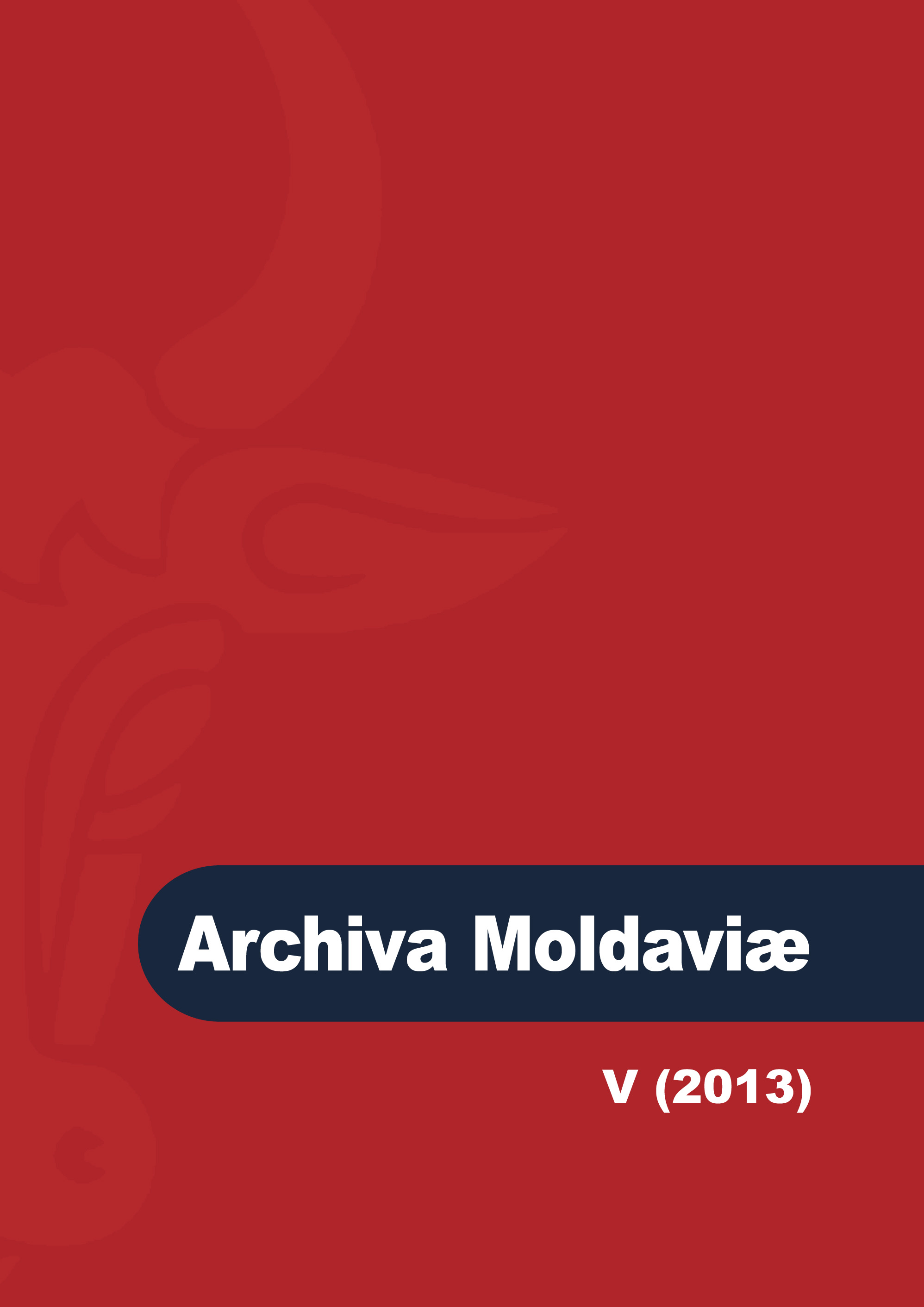Arhivele, cercetarea istorică şi memoria locului. Întoarcerea documentelor Moldovei la Iaşi după 150 de ani
Archives, Historical Research and Local Memory. The Return of Moldavia’s Documents to Iaşi after 150 years
Contributor(s): Dorin Dobrincu (Editor)Subject(s): History
Published by: Societatea de Studii Istorice din România
Keywords: patrimony; patrimonial concepts; archives; documents; research;memory; Moldavia; Iaşi; Romania; Bucharest; ecclesiastical fonds; fonds from OrganicStatutes.
Summary/Abstract: On April 26, 2012, the Romanian National Archives, in partnership with “Alexandru Ioan Cuza” University’s History Department and “A.D. Xenopol” Institute of History, both based in Iaşi, organized in Iaşi a debate titled Archives, Historical Research and Local Memory. The Return of Moldavia’s Documents to Iaşi after 150 Years. The following historians and archivists have participated at the conference: Arcadie Bodale, Cătălin Botoşineanu, Florin Cîntic, Mihai Cojocaru, Dorin Dobrincu, Sorin Iftimi, Florea Ioncioaia, Ştefan S. Gorovei, Andi Mihalache, Mihai Mîrza, Leonidas Rados, Claudiu Turcitu, Petronel Zahariuc. The conference was attended by a numerous public and researchers. A few archival documents were also on display at the conference. What occasioned the debate was the return to Iaşi in March-April 2012 of a number of important archival records (fonds) that were produced in Moldavia and which in the second half of the 19th century were moved to Bucharest in an effort to centralize the archives. Some 11 archival fonds were brought to Iaşi in the first phase. These fonds come from the periods of Organic and post-Organic Statutes: Adunarea Electivă Legislativă a Moldovei, Departamentul Treburilor din Lăuntru Moldova, Divanul Ad-hoc al Moldovei, Ministerul Cultelor şi Instrucţiunii Publice Moldova, Ministerul de Război Moldova, Ministerul Lucrărilor Publice Moldova, Obişnuita Adunare Obştească a Moldovei, Obştescul Control Moldova, Obştescul Divan al Moldovei, Visteria Moldovei, Visteria Moldovei – Direcţia Poştelor Moldova. A further 86 ecclesiastical fonds were transferred in a second phase, including documents issued by the Metropolitan Office of Moldavia, the Episcopate of Roman and Huşi, as well as other 79 monasteries (Agafton, Agapia, Aron Vodă, Barnovschi, Bârnova, Berzunţi, Bistriţa, Bogdana, Caşin, Cetăţuia, Dancu, Fâstâci, Frumoasa, Galata, Golgota, Golia, Neamţ, Pângăraţi, Probota, Popăuţi, Răchitoasa, Râşca, Sfântul Ioan Gură de Aur (Zlataust), Sfântul Sava din Iaşi, Sfântul Spiridon din Iaşi, Slatina, Socola, Soveja, Secu, Tazlău, Trei Ierarhi, Văratic, Vizantea, Vorona, Zagavia, etc.) and 4 city churche (Sfântul Lazăr din Iaşi, Sfântul Nicolae Domnesc din Iaşi, etc.). In total the number of documents returned to Iaşi reached 416.55 linear meters (or approximately 1,365 linear feet). Written in Slavonic, Greek and Romanian (Cyrillic) on parchment and/or paper, with various decorative elements and validation marks (seals, stamped seals), the Moldavian medieval documents depict a specific historical and cultural space. They reflect the development of regional and local history, being essential for reconstituting the complex image of a historical region (of a former state) with its own particular institutions, traditions and developments. Participants at the conference – from various institutions and holding different patrimonial and historiographical perspectives – have addressed the context in which these records were transferred from Iaşi to Bucharest. They also talked about the development of patrimonial concepts in the 19th and 20th centuries, the importance of returning home (term used by those present) of these funds, to be use for both professional historical research (documents are now close to the main institutions and researchers interested in them, located in north-eastern Romania, in Moldavian cities, especially in Iaşi, but also the Republic of Moldova) and for upholding local memory (lieux de mémoire). Historians and archivists have not hesitated to highlight issues little or never discussed in public with a general audience. Thus, historical facts relating to the conference topics were brought to the surface; interpretations of those facts were proposed; and suggestions were made for research topics based on the documents returned and/or their route throughout history, but especially in the last century and half. At the end of this text three tables are presented: 1. Transferes of documents between the branches of the Romanian National Archives, in accordance with the principles of archival fond integration and respecting the documents’ territorial belonging (2009-2012); 2. Moldavian ecclesiastical fonds transferred from Bucharest to Iaşi (March-April 2012); and 3. Moldavian Organic and post-Organic Statutes fonds transferred from Bucharest to Iaşi (March-April 2012)
Journal: Archiva Moldaviae
- Issue Year: V/2013
- Issue No: 5
- Page Range: 465-518
- Page Count: 54
- Language: Romanian

